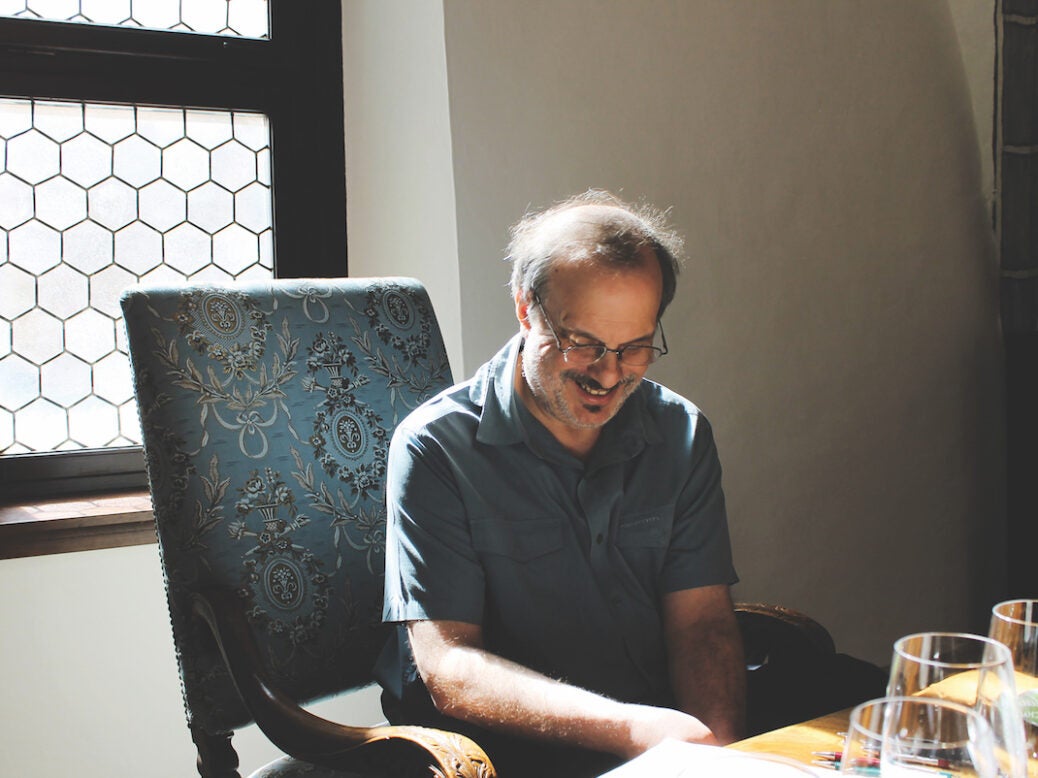
Grown-up wine writing full of emotion and exactly what we need
In his early, pre-professional days as a wine enthusiast, working a menial job for the US Military in late 1970s Germany as he tried to break into music journalism, the wine books Terry Theise read “talked about vineyards, wine estates, all the things that made wine what it was.” Educational reference books, in other words, or wine guides, as opposed to what may be called— if we take our cue from the same distinction in the travel department of the bookshop—wine writing.
At that time, when the USA (and the UK for that matter) was at the beginning of its wine-consumption and appreciation boom, this was no doubt what Theise, and the many other young men and women just getting started in wine, needed. And in his latest essay collection, What Makes a Wine Worth Drinking, Theise is generous in giving credit to the authors who laid the foundations of his own life-defining love affair. “My formative influence was a good writer,” Theise says of one such author, Hugh Johnson, “a civilized and knowledgeable fellow, and someone who not only permitted but encouraged emotional responses to wine.”
According to Theise, that emotional content has for the most part been sadly lacking in the “prevailing wine literature” that has emerged since. Theise is not the first to make fun of the fruit-salad school of tasting notes, to condemn the obsession with points, or to feel that the cold accumulation of technical detail rather misses the point. But he is among the most articulate and scathing. As he says, “Too much wine writing seems to crawl into an envelope and seal it from the inside. It’s as though a writer discussed his cross-country journey by writing only about the engine of his car, what his mileage was, how often he checked his tire pressure. He doesn’t even say what music he played. Landscapes whizz by unremarked upon. ‘On the climb up the front range of the Rockies my motor was really purring; I gave it 94 points on my 100-point scale!’”
Theise’s own writing can be seen as an attempt to provide an antidote to this hyperbolic but strangely frigid mode of engagement. It’s a project that first found a public voice in the catalogues he has long produced for Michael Skurnik Wines (the distributor for the range of wines he imports from small-grower Champagne, Germany, and Austria) and in the rangy essays he has contributed to this very magazine (some of which are included in What Makes a Wine Worth Drinking). It was refined still further in his widely acclaimed debut collection of essays Reading Between the Wines.
Bravura, brave, soulful
Theise put an awful lot of himself into Reading Between the Wines, both in those stretches of the book that looked back on the trajectory of his life and career, and in his unashamedly subjective, digressive approach to wine appreciation. The follow-up, even while it may contain less in the way of straightforward memoir, contains even more of this intensely likable, thoughtful soul.
In unskilled hands, this approach could lead to something horrendously solipsistic and preening. But with Theise, somehow, you never get the feeling—as you sometimes do with more prosaic, score-setting pundits—that his writing is all in the service of his ego. While he places himself—and the apparently mundane details of his everyday life— at the very center of the story, there’s an essential humility about his writing, one that has at its root an admission of the inevitable fallibility of his (of all of our) judgments. As he puts it, “We spend our wine lives considering what the glass brings to us. But how much time do we spend considering whom we bring to the glass and how this thing changes and alters as we move through our lives?”
Theise’s intuition is that there are deeper truths available—that we’ll get a better idea of what makes us love wine, as well as a more accurate and honest portrayal of how we respond to it—if we pay closer attention to the kinds of things that many would regard as extraneous to the wine-tasting experience—a more thoroughly phenomenological method, if you like, in which a close reading of mood, memory, and ambience are no less, or more, important than an analysis of the wine’s organoleptic properties.
It’s an approach that reaches its fullest expression in the book’s standout essay, “Finnegan’s Note.” Here, in more senses than one, we get the essence of Theise, as he describes how the events of an ordinary day (including stray thoughts and dreams) led up to—and in their very ordinariness provided the perfect setting for—a sublime experience with a bottle of 1966 Rioja from Bodega Palacio pulled, almost at random, from his own cellar.
It’s a bravura, not to say brave, piece of writing, all the more impressive for risking, as Theise himself puts it, crossing the “paper-thin line between being present in the moment and writing twee little paeans concerning ‘the adventures of my soul among masterpieces.’” That it doesn’t veer into preciousness is down to Theise’s craft as a writer: his humor, his generosity, his appetite for self-criticism, and his rigor—qualities that are no less evident in the many moments in What Makes a Wine Worth Drinking when he turns from impressionistic description to polemic. It means that, while you may not always agree with his take on natural wine, authenticity, or high alcohol, and you may on occasion feel he’s fallen into a question-begging philosophical muddle, you are always stimulated, always willing to give the benefit of the doubt, and never far away from a quotable line.
This is grown-up wine writing, full of emotion, in touch with that very Theiseian concept, soul, and, in these dangerously cynical times, exactly what we wine enthusiasts—we human beings—need.
Published by Houghton Mifflin Harcout $25






